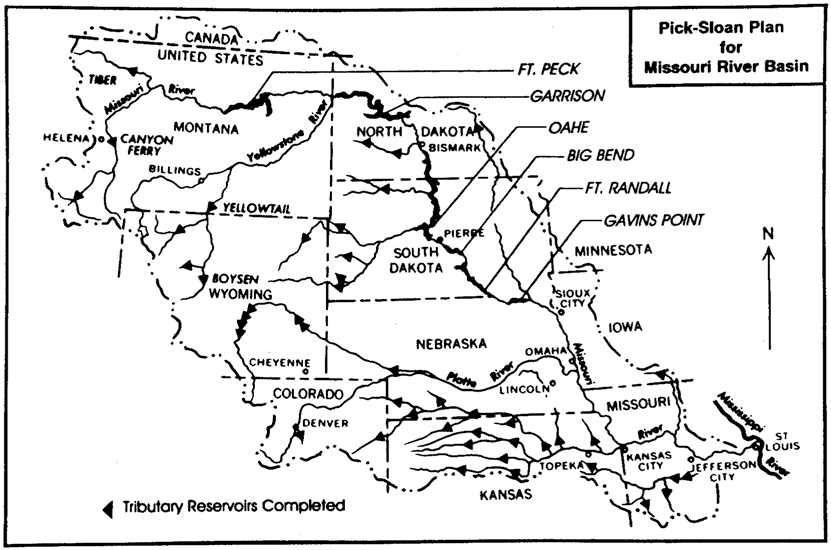The Pick-Sloan Missouri Basin Program

History of the Pick Sloan Project Western Area Power Administration
Pick Sloan Missouri Basin Program
History by Paul Neil
With the enactment of the Flood Control Act of 1944, the United States Congress created the Pick-Sloan Missouri Basin Program to assure “the intelligent, coordinated development and use of the water resources of the Missouri River Basin.” That plan involved the construction of dams along the Missouri River and its tributaries to provide not only power generation, but also flood control, navigation, recreation, and water for irrigation and municipal and industrial use.
The federal investment in these dams and generating facilities and in the associated transmission system is being repaid by Pick-Sloan power customers. In addition, revenues from power sales also aid in the repayment of other project purposes.
Preference Principle
A cornerstone of the federal power program is the preference principle, which gives rural electric cooperative, municipal electric utilities, public power districts and other public bodies first right to purchase the power generated at federal multipurpose projects. Embodied in more that 30 federal statutes going back to the beginning of this century, preference ensures that public resources will go to the consumers without passing through the “tollgates” of for-profit corporations. This principle and the cost-based rates of federal power provide a valuable yardstick in the electric utility industry that helps to assure low-cost power for all consumers.

